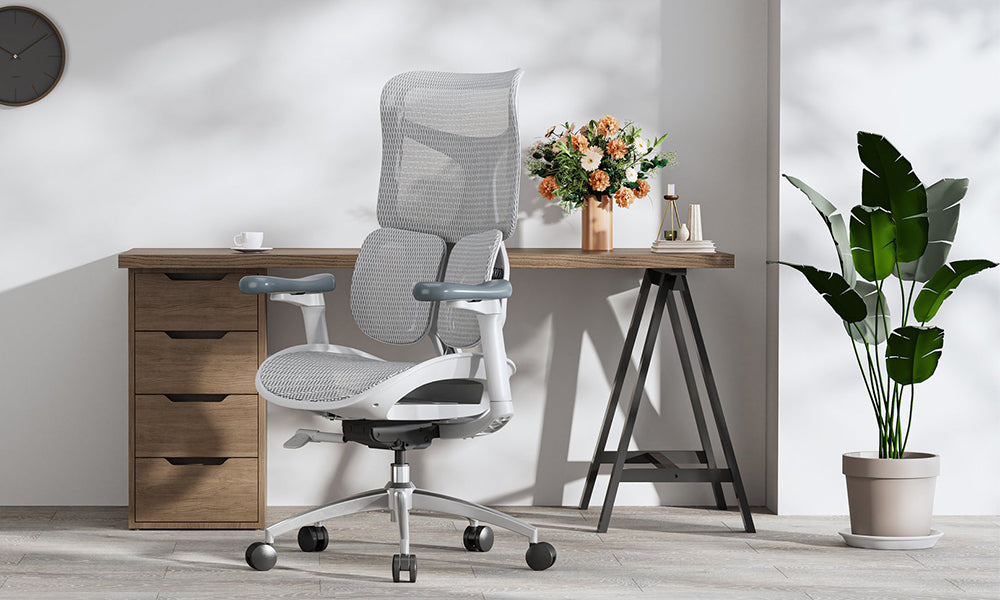In our increasingly sedentary world, where many people spend hours hunched over desks, the importance of ergonomic chair design cannot be overstated. Ergonomics, the study of people's efficiency in their working environment, plays a crucial role in chair design, aiming to enhance comfort, support, and overall well-being. But what exactly is the science behind ergonomic chairs design? This blog post delves into the principles, features, and benefits of ergonomic chairs, exploring how they can significantly impact our daily lives.
Understanding Ergonomics
At its core, ergonomics is about fitting the workplace to the individual rather than forcing the individual to adapt to the workspace. This scientific discipline involves understanding human anatomy, biomechanics, and psychology to create products that optimize comfort and performance. Ergonomists and designers study how people interact with their environment, using this data to inform design decisions that promote healthy posture and reduce discomfort.
Key Principles of Ergonomic Design
Support for Natural Posture: A well-designed ergonomic chair promotes a natural spinal alignment. It should provide support to the lumbar region of the back, encouraging users to maintain an upright posture. Features such as adjustable lumbar support allow users to customize the chair to fit the curve of their spine, reducing the risk of developing back pain.
Adjustability: One of the most critical aspects of ergonomic chairs is adjustability. The ability to modify various components—such as seat height, armrest height, and backrest tilt—ensures that the chair can accommodate different body types and preferences. This adaptability is essential for maintaining comfort and support during long periods of sitting.
Dynamic Movement: Ergonomic chairs are designed to facilitate movement. Features like swivel bases, seat depth adjustment, and tilt mechanisms allow users to shift their weight and change positions throughout the day. This dynamic movement helps to prevent stiffness and promotes circulation, reducing the likelihood of discomfort or pain.
Material Selection: The materials used in ergonomic chairs are chosen for their durability, comfort, and breathability. High-quality foam padding, breathable mesh, and supportive fabrics contribute to a comfortable seating experience while also promoting temperature regulation. These materials enhance the overall user experience by providing the necessary support and comfort for extended periods.
Encouraging Activity: Many ergonomic chair designs also consider the importance of promoting activity. Some models are designed to encourage standing or movement, such as sit-stand desks or chairs with built-in balance features. These designs acknowledge that regular movement is essential for maintaining health and well-being, especially for those who spend long hours at a desk.
The Role of Technology in Ergonomic Design
Advancements in technology have greatly enhanced ergonomic chair design. Computer-aided design (CAD) and ergonomic modeling software allow designers to simulate various postures and movements, helping to identify potential issues before physical prototypes are created. Additionally, the integration of smart technology into ergonomic chairs has emerged as a growing trend. Some modern chairs come equipped with sensors that monitor posture and remind users to adjust their position, ensuring that they maintain an optimal seating posture throughout the day.
Benefits of Ergonomic Chairs
The science behind ergonomic chair design is not just theoretical; it has practical implications that can lead to significant benefits for users. Here are some of the key advantages:
Reduced Pain and Discomfort: By providing proper support and promoting a healthy posture, ergonomic chairs can significantly reduce back, neck, and shoulder pain. This is particularly important for individuals who spend long hours sitting at a desk.
Increased Productivity: When employees are comfortable, they are more likely to stay focused and engaged in their work. Ergonomic chairs can lead to improved concentration and productivity, as users can work for longer periods without discomfort.
Enhanced Well-Being: The physical comfort provided by ergonomic office chairs contributes to overall well-being. Reducing discomfort and pain can lower stress levels and improve mood, leading to a more positive work environment.
Long-Term Health Benefits: Investing in ergonomic furniture is not just about immediate comfort; it also contributes to long-term health. By reducing the risk of musculoskeletal disorders and other health issues associated with prolonged sitting, ergonomic chairs can help users maintain their health over time.
Conclusion
The science behind ergonomic chair design is rooted in a deep understanding of human anatomy, biomechanics, and the principles of ergonomics. By prioritizing comfort, support, and adjustability, these chairs can transform the way we work and live. As the workplace continues to evolve, investing in ergonomic furniture is not just a trend but a necessity for promoting health, productivity, and overall well-being. Whether you're at home or in the office, choosing an ergonomic chair can make a significant difference in your comfort and health, ultimately enhancing your quality of life.



































